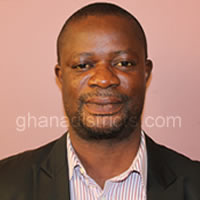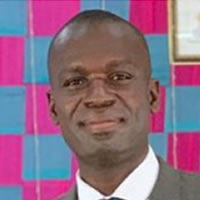This section of the District Medium Term Development Plan (DMTDP) deals with the administrative and institutional issues, which needs to be tackled to ensure effectiveness in the implementation of the development plan. The issues discussed include structure, procedures and roles. It is made up of detailed specification of expected roles of the District Assembly, the Area Councils, the Community, Public and Private Sector agencies including NGOs. All these development agents are stakeholders in the development of the district.
One of the principal purposes of the DMTDP is to provide a framework for development activities in the district in order to ensure coordinated efforts at reducing poverty. The District Administration has a central role to play to ensure coordination in the implementation of the development plan.
The District Assembly
Obuasi East District is the central institution within the district responsible for planning, implementing and management of development programmes and projects. The Assembly exercises deliberative, legislative and executive functions. They have been established as structures to which they are assigned with the responsibility of integrating political, administrative and development resources to achieve more equitable allocation of power and wealth at the district.
The Obuasi East District Assembly is the highest political and administrative body that provides guidance, gives direction and supervises all other administrative authorities in the District. The District Chief Executive and the Presiding Member are the political Heads of the Assembly.The Assembly is the District Planning Authority and is responsible for the overall development of the District. It formulates and executes plans, programmes and strategies for effective Mobilization and management of the District. Performance of this role can be enhanced by tapping available human and technical resources of the District Planning Coordinating Unit (DPCU), the Sub-Committees of the Assembly as well as the technical staff of the Assembly.
Composition of the District Assembly
The District Assembly constitutes members that form the head of legislation and deliberation about the issues of the district. There are twenty-seven (27) Assembly Members in Obuasi East District Assembly. The number of Assembly Members who represent the various electoral areas are nineteen (19) and the government appointees constitute eight (8) Members. Women constitute three (3) of the twenty-seven (27) Assembly Members representing 11.11% of the total Assembly Members of the district. Males on the other hand constitute 88.89%.
This implies that there is the need to empower women in the District to be more involved in the governance and decision making in the district. This will invariably result in the larger presence of females in Obuasi East District Assembly structure.
The District also has one (1) Constituency with a Member of Parliament who is an ex-officio Member of the District Assembly.
Table 1.24: Sex Compositions of Assembly Members
Source: OEDA – DPCU, July 2018.
Committees of the District Assembly
Obuasi East District has in place two (2) committees. Namely
1. The Executive Committee
2. The Public Relations and Complaints Committee
The Executive Committee Under section 19(2) of the Local Governance Act, 2016 (Act 936), the District Chief Executive (DCE) is the chairman of the Executive Committee and he presides over the meetings. The District Chief Executive is responsible for the day-to-day performance of the executive and administration functions of the Assembly and the supervision of the various departments. He performs these functions through the District Coordinating Director (DCD) who is the head of the Administrative machinery in the district, Heads of Department and sub-governmental agencies operating in the district
In accordance with section 19(1) of Act 936, Obuasi East District Assembly has in place an Executive Committee which spearhead over the administrative and executive functions of the Assembly. Section 19(2) of Act 936, the Executive Committee is made up of the District Chief Executive (DCE) who is the Chairman, Chairpersons of all the statutory Sub-Committees, the chairperson of one ad hoc SubCommittee of the Executive Committee elected by the District Assembly and any two other members elected by members of the District Assembly, at least one of whom is a woman.
The Executive Committee is the body that assists the District Chief Executive in the performance of its functions. It deliberates and takes decisions on policy issues in relation to the Assembly and also deliberates on the grievances passed forward by the Assembly Members and the Sub–Committees in order to reach a consensus that is fed into the administrative system for implementation.
Statutory Sub-Committees of the District Assembly A number of established Sub-Committees function as the operating arms of the Executive Committee and assist in the implementation of special activities of the Assembly. The Statutory Sub-Committees of Obuasi East District Assembly are as follows:
· Development Planning Sub-Committee;
· Social Services Sub-Committee;
· Works Sub-Committee;
· Finance and Administration Sub-Committee;
· Justice and Security Sub-Committee.
The Sub-Committees have the responsibility for collating issues relevant to the District Assembly (DA). These Committees deliberate on issues into greater details and submit their recommendations to the Executive Committee for further deliberations and recommendations to the General Assembly.
Apart from the Statutory Sub-Committees of the Assembly, the district assembly has in place other sub-committees to help the development of the district. These committees include;
· Mining and Environment Sub-committee
· Agriculture sub-committee
The Public Relations and Complaints Committee
The Public Relations and Complaints Committee is a committee in the district which is chaired by the Presiding Member (PM) to address public complaints and welfare of the Assembly Members.
Sub-District Structures
To make for the involvement of all in the development process and the art of governance in the district, the sub-district structures were created. These are the Town/Area Councils and Unit Committees immediately below the District Assembly. Sub-district structures in this context refer to government political and administrative structures below the district. The district and the sub-district structures are the most important levels in countries pursing decentralization and they are the pivot of local level development but the composition of sub-district structures in terms of levels differ from country to country.
In an attempt to facilitate bottom-up planning and decision making, the decentralization policy established the sub-districts structures which include the Town and Area councils and the Unit Committees. These sub-structures serve as a link between the local people and the District Assembly. In Ghana, the Sub-district Structures were established in 1994 with a Legislative Instrument (LI 1589). For effective decentralization, the sub-district has assumed some responsibilities as enshrined in the LI 1967. Their responsibilities are not limited to the following:
· They assist persons authorised by the District Assembly to collect revenue
· They recommend to the Assembly the naming of all streets in their area of authority and let all the buildings in the area to be numbered.
· They are responsible for day to day administration of the Urban, Area or Town Councils. They make proposals to the Assembly for levying and collection of special rates for projects and programmes within the area.
· They take steps as may be necessary to prevent disasters including floods and bush fires in the urban areas.
· They mobilize members of the unit for the implementation of self-help and development projects.
· They are responsible under the guidance at the Registrar of Births and Deaths, for the registration of births and deaths in the community.
· Organize communal voluntary work especially with respect to sanitation.
· Educate the people on their rights, privileges, obligations and responsibilities with the District branch of the National Commission for Civic Education.
Town and Area Councils and Unit Committees in Obuasi East District
Obuasi East District has three (3) Area/Town Councils. Namely
· Wawasi/ Kwabrafoso Town Council
· Brahabebome/Akaporiso Town Council
· Tutuka/Odumasi Town Council
Table 2.25: Town Councils and their locations in the District
Source: OEDA–DPCU, July 2018.
Unit Committees
There are 19 Electoral Areas in the District. There are therefore 19 Unit Committees representing each electoral area of the district.
Citizenry Participation
For effective development in the district, there is the need for citizenry participation in decision making and implementation. In this light, the district involves the citizens in the development decision making and implementation. Example organisation of community durbars to identify problems and strategies to fulfil the development agenda of the District Assembly. Again, Communities participate in the payment of counterpart funds for projects like water and sanitation etc.
Civil Society Organisations/Non-Governmental Organisations There is collaboration between Civil Society Organisations and the Assembly aimed at a collective effort in the development of the district. Non-governmental Organizations exists to supplement the efforts of the District Assembly to accelerate the pace of Development.
NGO’s are potential source in the provision of funds, materials, training and machinery for project execution.
Security
It is a statutory obligation of any government of a country, region, district and a spatial entity to ensure that its citizens are protected to go about their normal duties without fear of intimidation or oppression. Failure to do this will bring about anarchy in that spatial entity concerned and in the long run retarding its development.
There three (2) police stations within the district namely; Tutuka Police Station and the MTTU Station at Station at Asonkore. The Ghana Police Service is also supported by the District Urban Guards and other private security agencies which operate within some organizations and institutions.
District Police Service
The District Assembly in collaboration with the District Police Service is generally expected to maintain law and order, protect life and property by arresting and prosecuting those who fall foul of the law. There are police station located at Tutuka and Asonkore which provide assistance in the district.
2 Fire Service There is one government fire station in the district
Date Created : 5/31/2023 12:00:00 AM






 facebook
facebook X (twitter)
X (twitter) Youtube
Youtube +233 593 831 280
+233 593 831 280 0800 430 430
0800 430 430 GPS: GE-231-4383
GPS: GE-231-4383 info@ghanadistricts.com
info@ghanadistricts.com Box GP1044, Accra, Ghana
Box GP1044, Accra, Ghana